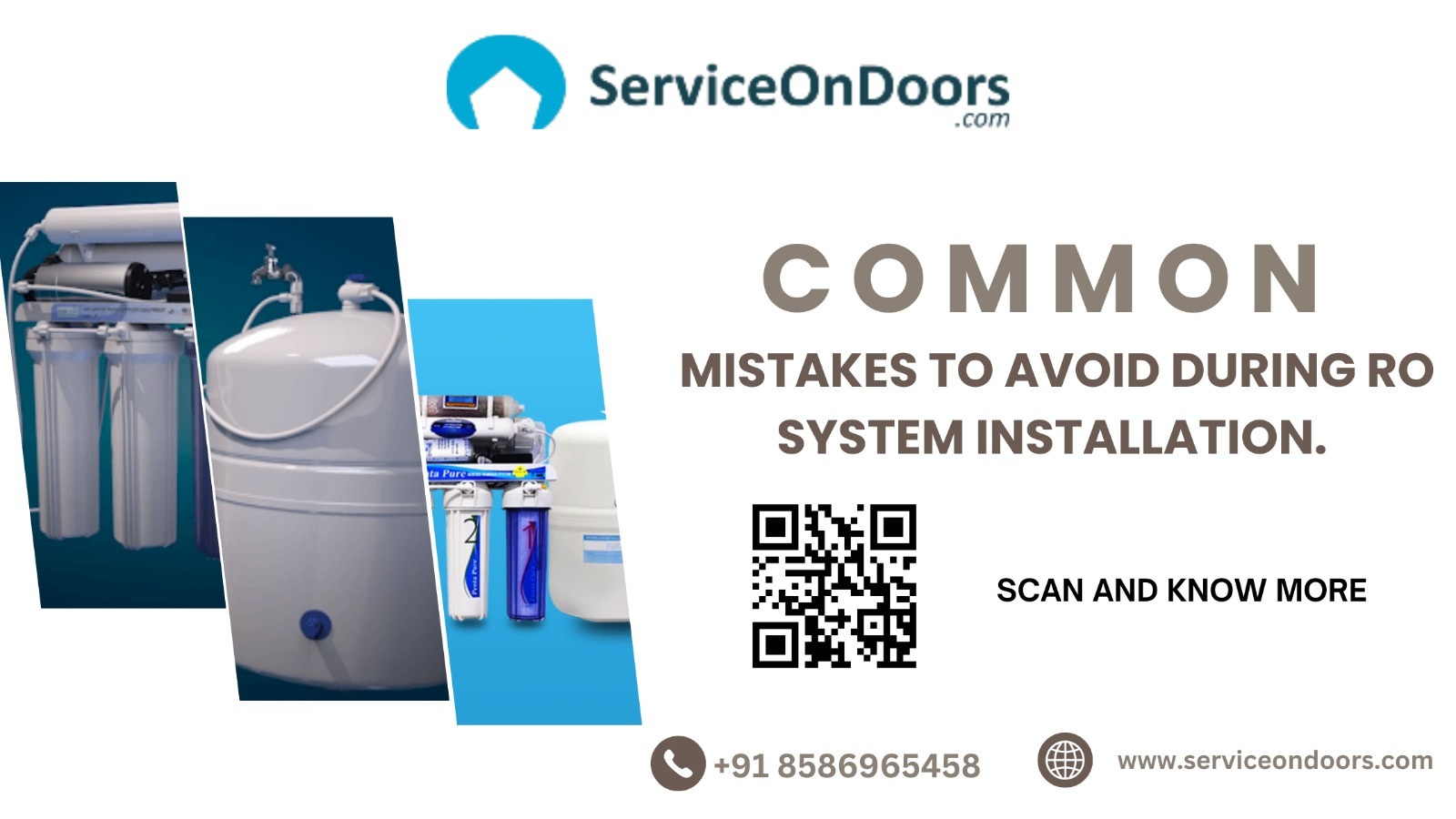Introduction
Installing a Reverse Osmosis (RO) system is an essential step to ensure clean, purified water in your home. However, the installation process can be tricky if not done correctly, leading to potential problems that may affect the system's performance and longevity. In this blog, we’ll explore the common mistakes people make during RO system installation and provide tips to avoid them, ensuring a hassle-free setup and optimal functionality.
1. Choosing the Wrong Location
One of the most common mistakes is installing the RO system in an inappropriate location. A poorly chosen location can lead to inconvenient access, water leakage, or even system damage.
What to Avoid:
- Installing the RO system too far from the water supply or drainage point.
- Choosing a location without proper ventilation or protection from extreme temperatures.
- Placing the system where it's difficult to access for filter replacements or maintenance.
Solution:
Choose a well-ventilated, easily accessible area near the water supply and drain. For most homes, under the kitchen sink is an ideal location. Ensure there is enough space for the system and its components.
2. Improper Plumbing Connections
Incorrect plumbing connections can cause leaks, improper functioning, or contamination of the water.
What to Avoid:
- Not using Teflon tape on threaded connections, leading to leaks.
- Connecting the RO system to the wrong water inlet or drainpipe.
- Failing to tighten connections properly.
Solution:
Follow the manufacturer's instructions carefully. Use Teflon tape on threaded connections and check for leaks after securing the plumbing. If unsure, consider hiring a professional plumber.
3. Skipping Pre-Filter Installation
Pre-filters play a crucial role in removing large particles and impurities before the water enters the RO membrane. Skipping this step can damage the membrane and reduce the efficiency of the system.
What to Avoid:
- Ignoring the need for pre-filters in areas with high sediment or hard water.
- Failing to replace pre-filters regularly.
Solution:
Always install the recommended pre-filters as per the system's guidelines. Replace them according to the manufacturer's schedule to maintain optimal performance.
4. Not Flushing the System Before Use
New RO systems often contain residues from the manufacturing process, which can affect water quality if not flushed out.
What to Avoid:
- Using the water immediately after installation without flushing.
- Failing to follow the recommended flushing duration.
Solution:
After installation, flush the system by allowing water to pass through it for the time specified in the manual (usually 2-3 hours). This ensures clean, safe water for consumption.
5. Incorrect Tubing Installation
Tubing connections are a vital part of the RO system. Incorrectly installed tubing can lead to leaks or system malfunctions.
What to Avoid:
- Cutting tubing too short or leaving it too long, which can cause leaks or poor flow.
- Forgetting to secure tubing with clips or fasteners.
Solution:
Cut tubing to the proper length and ensure it fits securely into the connections. Use clips or fasteners to keep the tubing in place and prevent it from coming loose.
“Whether you're installing the system yourself or relying on a professional, taking the time to plan and execute the installation process correctly will save you from unnecessary hassles and expenses down the line.”
Final Thoughts
Our goal is to provide hassle-free service so you can enjoy purified water without worrying about system malfunctions or maintenance issues. Whether you need a new installation, regular servicing, or emergency repairs, ServiceOnDoors is your trusted partner for all things RO.
Reach out to us today at +91 85869 65458 or visit our website at www.serviceondoors.com to book our services. Let us take care of your RO system, ensuring it delivers clean and healthy water for years to come!
